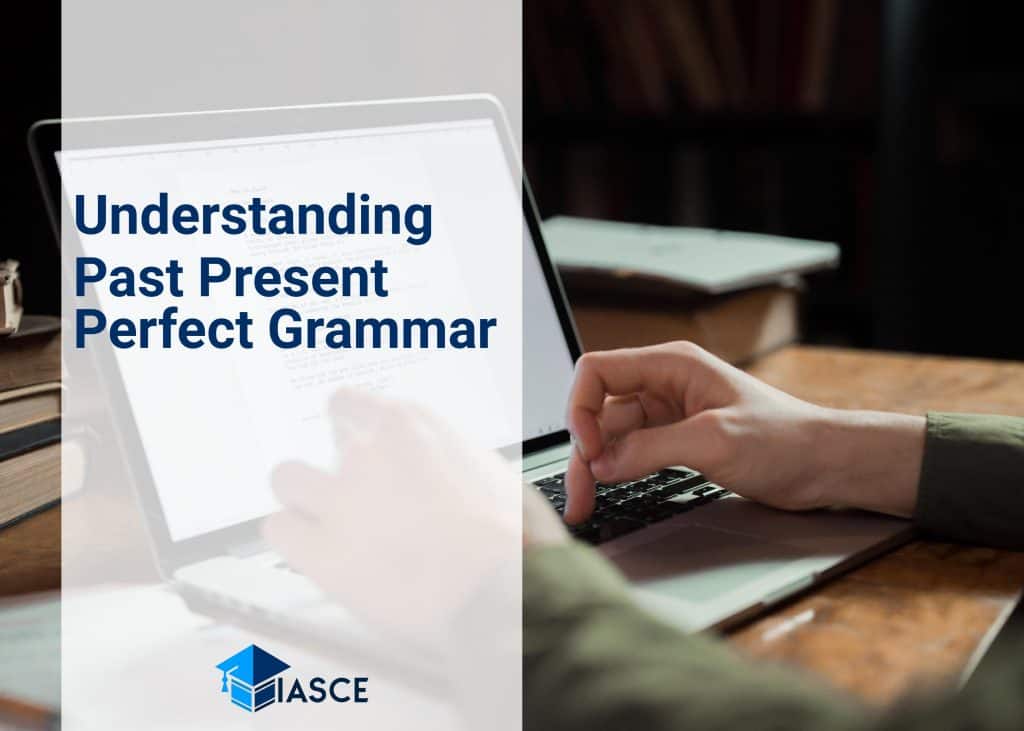Navigating the labyrinth of English grammar isn’t always a walk in the park. That’s especially true when it comes to past present perfect, a tense that often leaves many of us scratching our heads. Are you one of those who find themselves stuck in the maze? No need to fret, I’m here to simplify things for you.
In this piece, we’re going on an enlightening journey, unlocking every nook and cranny of past present perfect grammar. I’ll be your guide, leading you through the intricacies and nuances that make this tense so uniquely challenging yet essential.
By the time you’ve finished reading my article, not only will you have mastered this tricky tense but also developed a deeper appreciation for English grammar as a whole. Let’s dive right into it!
Understanding the Past Present Perfect Tense
When it comes to mastering English grammar, it’s easy to get tripped up by the different tenses. The past present perfect tense is one that often confuses people. I’m here to unravel its mysteries and help you understand how and when to use it.
The past present perfect tense is used when an action occurred at an unspecified time before now. The exact moment isn’t important; what matters is that it happened in the past and has relevance to the current conversation or situation.
Let’s look at a few examples:
| Past Present Perfect | Explanation |
|---|---|
| I’ve visited France before. | This implies that at some point in your life, you went to France. It doesn’t specify when, just that it happened. |
| She’s seen this movie already. | Again, we don’t know exactly when she saw the movie—only that she has seen it in her lifetime. |
Notice how both sentences use ‘have’ along with a past participle (visited, seen). That’s your clue for spotting this tense!
One common mistake folks make is confusing this tense with simple past. Here are some comparisons:
| Simple Past | Past Present Perfect |
|---|---|
| I visited France last year. | I’ve visited France before. |
| She saw this movie yesterday. | She’s seen this movie already. |
See the difference? Simple past specifies a concrete time period (last year, yesterday), while past present perfect leaves it vague—it could have been anytime in the past.
It may seem like a subtle distinction but understanding these nuances can make all the difference in conveying your intended message accurately. So next time you’re drafting an email or chatting with friends, remember: Use the past present perfect tense when timing isn’t crucial but relevance is.
Practical Tips to Master it
Mastering the past present perfect tense isn’t as daunting as it may seem. Let’s dive into some practical tips that’ll help you conquer this grammar concept.
First off, get a firm grip on the basic structure. The past present perfect is formed using have or has followed by the past participle of the main verb. For example, “I have eaten” or “She has arrived”.
Remember, context is king. This tense is typically used when an action happened in the past but still affects the present moment.
Here are some real-life examples:
| Past Present Perfect | Meaning |
|---|---|
| I have visited Paris twice. | The trips happened in the past, but my experience influences me now. |
| She has lost her keys. | She can’t find them now because she lost them earlier. |
Secondly, don’t forget about contractions! They’re common and give your language a more natural flow. Here’s how they work:
- I’ve (I have)
- You’ve (You have)
- He’s/She’s/It’s (He has/She has/It has)
Lastly, practice makes perfect! Engage with English media like books or movies to see this tense in action.
Remember these points:
- Identify the usage of past present perfect.
- Practice using sentences with this tense.
- Ask for feedback if possible.
With these tips at your fingertips and a little perseverance, you’ll master the nuances of past present perfect before you know it!
Conclusion: Summing Up the Past Present Perfect
I’ve delved deep into the past present perfect tense, breaking it down to its core components. I hope you now understand what a versatile tool it is in our language toolkit.
It’s unique in how it links the past and the present, providing a bridge between them. It allows us to express complex ideas about time and sequence of events that other tenses can’t quite capture with such precision.
Let’s revisit some key points:
- The past present perfect tense indicates an action completed at some point before the ‘now’ but still has relevance or impact on the present.
- The structure of this tense is straightforward: “has/have” + “past participle.”
- This tense can be used in numerous ways including showing experience, change over time, or completed actions with current relevance.
To help cement these concepts further, let’s look at this table with examples:
| Sentence | Explanation |
|---|---|
| I’ve read that book. | Experience – I have this reading experience up until now. |
| She’s grown so much since last year. | Change over time – She started growing last year and has continued until now. |
| He’s washed his car; it looks new! | Completed action with current relevance – He washed his car (action complete) but it being clean impacts ‘now’. |
While mastering any grammatical concept takes practice and patience, understanding how to use the past present perfect correctly will undoubtedly enrich your English communication skills.
Remember, grammar isn’t about following rules for rules sake; instead, it helps us communicate more effectively and accurately — ensuring our intended meaning gets across without confusion or ambiguity.
So go ahead and experiment! Use past present perfect when sharing your experiences or discussing changes over time. You’ll soon appreciate its value in your everyday conversation.

